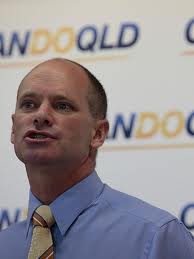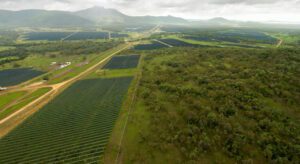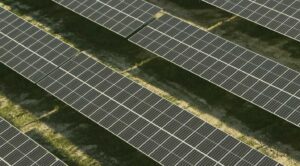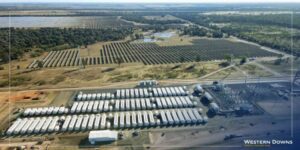One of the most depressingly predictable political back-flips has finally come to pass, with the Campbell Newman-led Queensland state government abandoning its commitment to the solar bonus scheme, and announcing it will slash its net feed-in tariff from a 44c/kWh to just 8c/kWh.
The dramatic move means that Queensland is the last state to remove the solar PV FiT, and replace it with a nominal amount. The 8c tariff will be reviewed in July 2013, and will end in July 2014 – leaving retailers to make only a “voluntary contribution.”
This is despite promises by Newman during the campaign that the solar bonus scheme would not be cut. But as we pointed out in this item in March, Can-do Campbell and the art of political risk, Newman intended to cut a whole range of climate and clean energy schemes. Newman has now brought an end to a variety of renewable energy schemes, including a $5 million grant for the Cloncurry solar PV project, and funding for geothermal research.
Newman also sought to exit a $75 million grant for the Solar Dawn project in the solar flagships program, but has found he could not. He may still be able to hold on to the money if Solar Dawn is unable to negotiate a power purchase agreement with the state government-owned utility.
Queensland was the last state to pull back on its feed-in tariff, mostly because it was so successful, intelligently designed, and cost little to other electricity users – AEMO last year estimated it added just 0.013c/kWh to electricity bills.
However, the government was lobbied intensely by generators, led by AGL (whose managing director Michael Fraser chairs the Clean Energy Council) to can the FiT on the basis that it was a “regressive” tax that penalised other users. AGL argued, as we highlighted in this article, that although the FiT represented less than 1 per cent of overall costs, it represented a transfer of wealth from generators to consumers.
The Queensland government said on Monday that the tariff was expected to cost most users around $1 a week, or $55 out of an average total bill of more than $2,400 – most of which comes from expansion of state government owned infrastructure.
However, energy minister Mark McArdle decided to add the numbers up and make them look scary by saying the scheme would cost $1.8 billion if left to run as is until 2028. Not that anyone had been suggesting that. There was no mention of the impact of solar in reducing demand and wholesale electricity prices – they are at their lowest in Queensland since the establishment of the National Electricity Market – a point recognised by federal energy minister Martin Ferguson last week.
The solar industry has been suggesting the scheme be changed, particularly in light of the 50 per cent reduction in module costs in the last 18 months, but it argued for a staged reduction to avoid havoc in the industry, and to end with a tariff that reflected the value of the solar put back into the grid (i.e. give it a value greater than coal). But it appears that Queensland has chosen to follow the path of its fellow conservative governments in Victoria and South Australia.
The utilities have been agitating against solar PV because it is reducing demand on the grid, particularly in daytime hours when generators could normally generate higher revenues from increased demand. Some are now imposing fixed tariffs on larger users that make solar less able to defray grid costs and less appealing to customers.
What happens now in the Queensland market will be interesting to see. This year, the Queensland market accounted for nearly half the rooftop PV installations in Australia. Given that customers have 10 days to sign up for a rooftop system (midnight July 9) to take advantage of the higher tariff, a surge in demand can be expected. Warwick Johnston of Sunwiz says managing the anticipated demand could be a challenge for the industry.
The CEC said in a statement that 4,500 jobs could go in Queensland once the dust settles. It said the Solar Bonus Scheme had helped build an industry which now employed 11,000 Queenslanders and stimulated $2.37 billion worth of private investment.
“It is appropriate that the Queensland government reduces the level of its support scheme, given the great success of solar and the reduction in the cost of solar power systems in recent times,” acting CEO Kane Thornton said in a statement. “However, this kind of sudden drop could have a serious negative impact on an industry that has been delivering major economic benefits to the state,” he said.
Queensland was to be the initial market targeted by new solar leasing firms, that offer a zero-down payment for rooftop installations. How that market develops after the change in the tariff will be fascinating, although US firm SunRun, which offers a similar deal in California, said leasing finance had jumped 80 per cent in California in the past year – and was most popular with home-owners on modest incomes (the average was household income of $57,000). The US market is now dominated by solar leasing financing options.
Johnston said the decision also has broader implications. “The danger is that this continues to send the message that solar power is worth less than electricity sourced from a distant coal-fired generator,” he wrote in a note to clients.
“It could also influence the Victorian government’s review of its own feed-in tariff. The 8c/kWh is half the 16c/kWh offered by the South Australian government, which also mandates a minimum additional retailer contribution that grows over time. The Victorian transitional FiT is only months away from reaching its 75MW cap; the VCEC draft recommendation has not been finalised, but it recommends no replacement FiT and an adjustment to the definition of a ‘fair and reasonable’ sFiT.
“The Queensland government seems to be singing from the same hymn book in asking the Queensland Competition Authority to recommend a ‘fair and reasonable’ solar feed-in tariff – people familiar with the NSW solar rally will remember that the NSW government’s adopted ‘fair and reasonable’ definition seemed only fair and reasonable to the coal generators they owned and were trying to sell… little wonder state governments wish to send the message that solar is worth less than coal.
“The only excuse they fall back on for not giving solar power the same value as retail electricity is the structure of the National Electricity Rules (which were written by the states long before solar power became popular).
“In spite of calls for urgent reform and broad recognition that the current rules penalised solar power and rewarded network gold-plating, governments have not even made glacial progress in the past five years, with the unpopular result of high electricity prices driven by the cost of network infrastructure to service people’s desire for air conditioning. Ironically, its the state governments that receive a guaranteed dividend from the electricity distributors investments that represent 50 per cent of electricity bills, even while they try to blame solar for rising power prices.”
The Australian Solar Energy Society said it was essential that utilities must start paying the same rate for solar that customers pay for grid electricity. “Solar is poised to compete on cost with fossil fuel generated power, so it is time governments priced solar power the same as fossil fuel power,” CEO John Grimes said in a statement.








